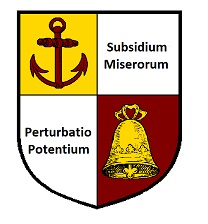Adjudicating Two-Party Disputes |
||
|
The Problem |
Is negotiation too big a part of your life? Do you find yourself bogged down in seemingly interminable and often intractable disputes over the division of assets, or the resolution of a complex set of issues? Would you like a way to eliminate this aggravating and stressful activity? Sure you would. But how? Classically, there are only three solutions:
The second and third solutions involve bringing in a third party, which adds cost to the process. The first alternative often leads to a "zero-sum game" mentality, where winning becomes paramount, and issues of fairness take a back seat. Is there a fourth alternative? |
|
|
Steven J. Brams and Alan D. Taylor have invented a procedure that allows two disputants to resolve their disagreement fairly and without the assistance of a third party. Here is their description, from the end flap of their book jacket:
The book is a short, splendid treatment. It is completely self-contained, and has lots of great, real-world examples. |
The Solution |
|
|
Resources |
Here are the particulars; click on the title to go to the
appropriate page on Amazon.com.
The list price for the paperback is $13.95, with the usual applicable discounts. A used copy of the hardcover edition can be obtained from various sources for under $5. There is also an excellent web page called Adjusted Winner that does a good job of explaining the algorithm and letting you try it out. Highly recommended! The algorithm was patented in 1999 (Patent Number 5,983,205). |
|
|
After you have read the book, you may want to use the process. But some people are intimidated by the thought of having to set up and solve equations, as the authors do in the book. This "math barrier" stands in the way of their using a really great approach. This is where I come in. I can make an Excel Workbook available to you. This workbook contains blank spreadsheets that allow you to enter your numbers and immediately obtain the solution to your problem. This workbook automates the Brams Taylor algorithm for an equal division between two parties. It does all the decision-making and "messy math" for you. Additionally, we take the practical examples from the book and show you the filled-out worksheets that deliver the results cited. This is a useful tool that takes care of the mechanics of the method. If you are interested in obtaining the Workbook, click here. |
Automating the Math |
|
|
What is so special about Brams-Taylor? |
If you are interested in more details about the Brams-Taylor algorithm in advance of purchasing the book, click here. |
|
|
Click here to e-mail Barbecue Joe about the Brams Taylor algorithm |
||

